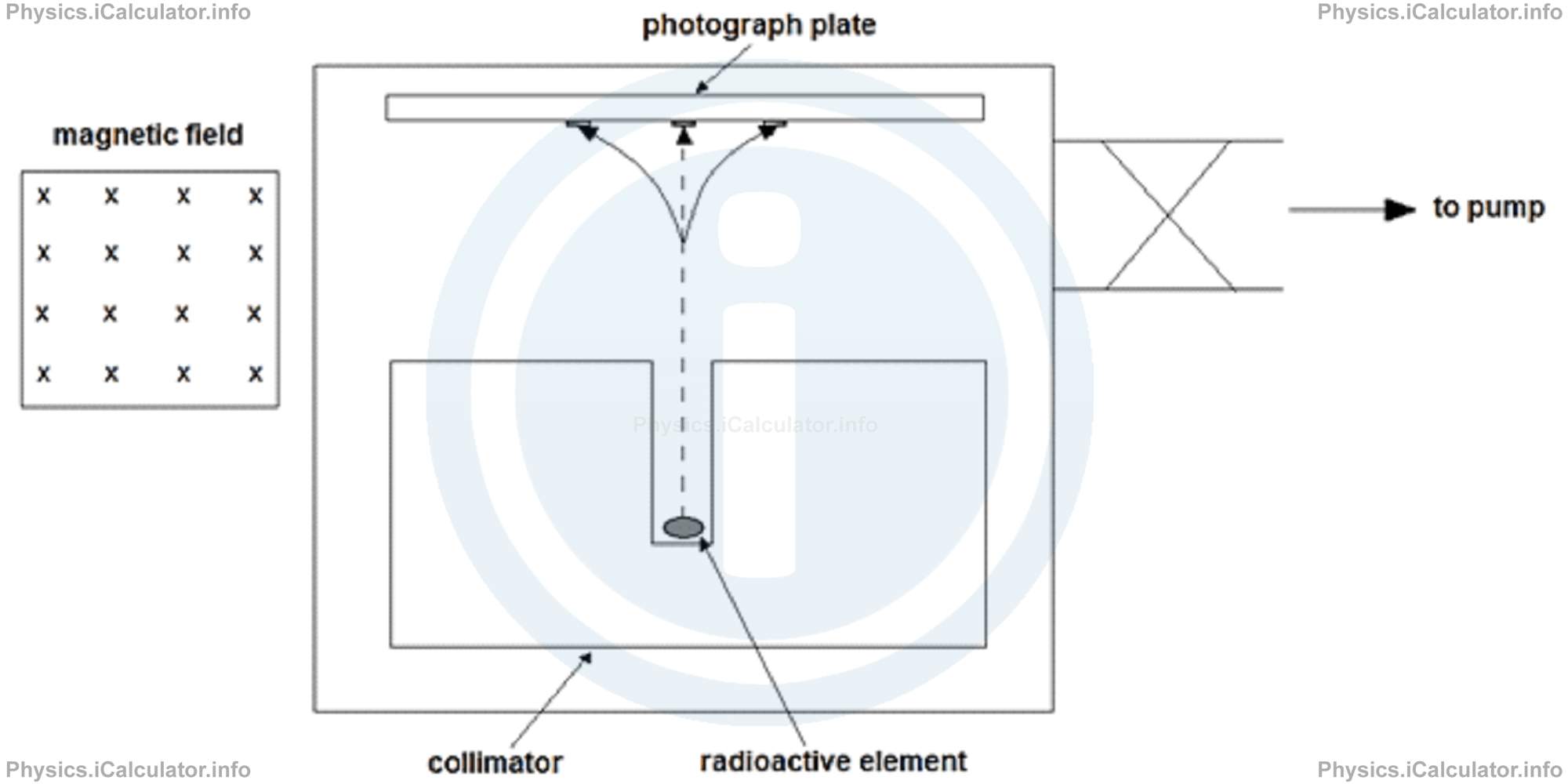Menu
Physics Lesson 20.3.1 - Natural Radioactivity. Becquerel's Experiment
Please provide a rating, it takes seconds and helps us to keep this resource free for all to use
Welcome to our Physics lesson on Natural Radioactivity. Becquerel's Experiment, this is the first lesson of our suite of physics lessons covering the topic of Radioactivity and Half-Life, you can find links to the other lessons within this tutorial and access additional physics learning resources below this lesson.
More on Natural Radioactivity. Becquerel's Experiment
Becquerel's experiment on natural radioactivity consists on the following procedure:
The radioactive material emits radiation in the form of a narrow beam because of the collimator (a device for producing a parallel beam of rays or radiation). The traces resulted in the photograph plate were deflected from their linear path, as shown in the figure.

The reason for this deflection of radioactive beam from their linear path is their interaction with the magnetic field after flowing out of collimator. These are not the standard X-rays, as X-rays rays cannot be deflected by magnetic field (as X-rays do not carry any electric charge to interact with magnetic field). Hence, obviously the radiation emitted by collimator is electrically charged. From this fact, we can obtain the definition of radioactivity as a phenomenon naturally occurring in materials:
Radioactivity is the phenomenon of emission of ionizing radiation or particles caused by the spontaneous disintegration of atomic nuclei.
When different radioactive materials were used in the experiment, different behavior of the corresponding beams was observed. Thus, in some cases there was a deflection due left, in other cases due right and in a few cases there was no deflection at all. This means that from the electric point of view, there are three types of radiations emitted by radioactive materials: positive, negative and neutral. Rutherford named them as alpha (α), beta (β) and gamma (γ) radiation respectively.
The term "radioactive" was first used by the Curie consorts (Pierre and Marie Curie), whose work on this field is invaluable. They managed to isolate some radioactive elements such as radium (Ra), uranium (U) and polonium (Po).
Now, let's explain more in detail each type of radiation mentioned above.
You have reached the end of Physics lesson 20.3.1 Natural Radioactivity. Becquerel's Experiment. There are 5 lessons in this physics tutorial covering Radioactivity and Half-Life, you can access all the lessons from this tutorial below.
More Radioactivity and Half-Life Lessons and Learning Resources
Whats next?
Enjoy the "Natural Radioactivity. Becquerel's Experiment" physics lesson? People who liked the "Radioactivity and Half-Life lesson found the following resources useful:
- Becquerel Feedback. Helps other - Leave a rating for this becquerel (see below)
- Nuclear Physics Physics tutorial: Radioactivity and Half-Life. Read the Radioactivity and Half-Life physics tutorial and build your physics knowledge of Nuclear Physics
- Nuclear Physics Revision Notes: Radioactivity and Half-Life. Print the notes so you can revise the key points covered in the physics tutorial for Radioactivity and Half-Life
- Nuclear Physics Practice Questions: Radioactivity and Half-Life. Test and improve your knowledge of Radioactivity and Half-Life with example questins and answers
- Check your calculations for Nuclear Physics questions with our excellent Nuclear Physics calculators which contain full equations and calculations clearly displayed line by line. See the Nuclear Physics Calculators by iCalculator™ below.
- Continuing learning nuclear physics - read our next physics tutorial: Nuclear Reactions
Help others Learning Physics just like you
Please provide a rating, it takes seconds and helps us to keep this resource free for all to use
We hope you found this Physics lesson "Radioactivity and Half-Life" useful. If you did it would be great if you could spare the time to rate this physics lesson (simply click on the number of stars that match your assessment of this physics learning aide) and/or share on social media, this helps us identify popular tutorials and calculators and expand our free learning resources to support our users around the world have free access to expand their knowledge of physics and other disciplines.